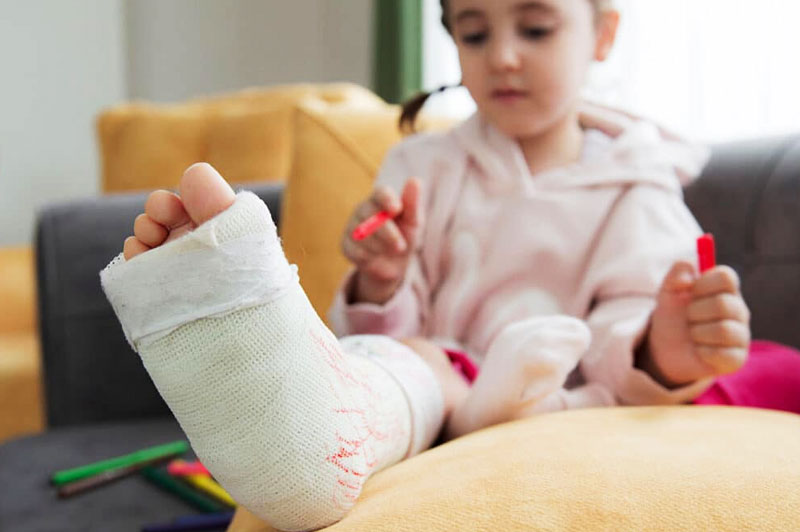
Fractures

A pediatric fracture refers to a broken bone in a child or adolescent. Children’s bones are more flexible and have growth plates, which makes their fractures different from those in adults.
Common Types of Pediatric Fractures
- Greenstick Fracture: Bone bends and cracks without breaking completely.
- Torus (Buckle) Fracture: Compression causes a bulge in the bone, common in the wrist.
- Growth Plate Fracture (Salter-Harris): Involves the growth area of the bone.
- Complete Fracture: Bone breaks fully into two or more pieces.
- Plastic Deformation: Bone bends without visible fracture line.
Symptoms
- Pain and swelling
- Deformity or inability to move the limb
- Bruising
- Tenderness at the site of injury
Diagnosis
- Pain and swelling
- Deformity or inability to move the limb
- Bruising
- Tenderness at the site of injury
Treatment
Non-Surgical:
- Casting or splinting
- Realignment (closed reduction)
Surgical:
- For displaced, unstable, or open fractures
- Methods: Kirschner wires, plates, or intramedullary nails
Future Complications
- Growth disturbances (limb length discrepancy)
- Angular deformity
- Re-fracture
- Joint stiffness (if immobilized too long)